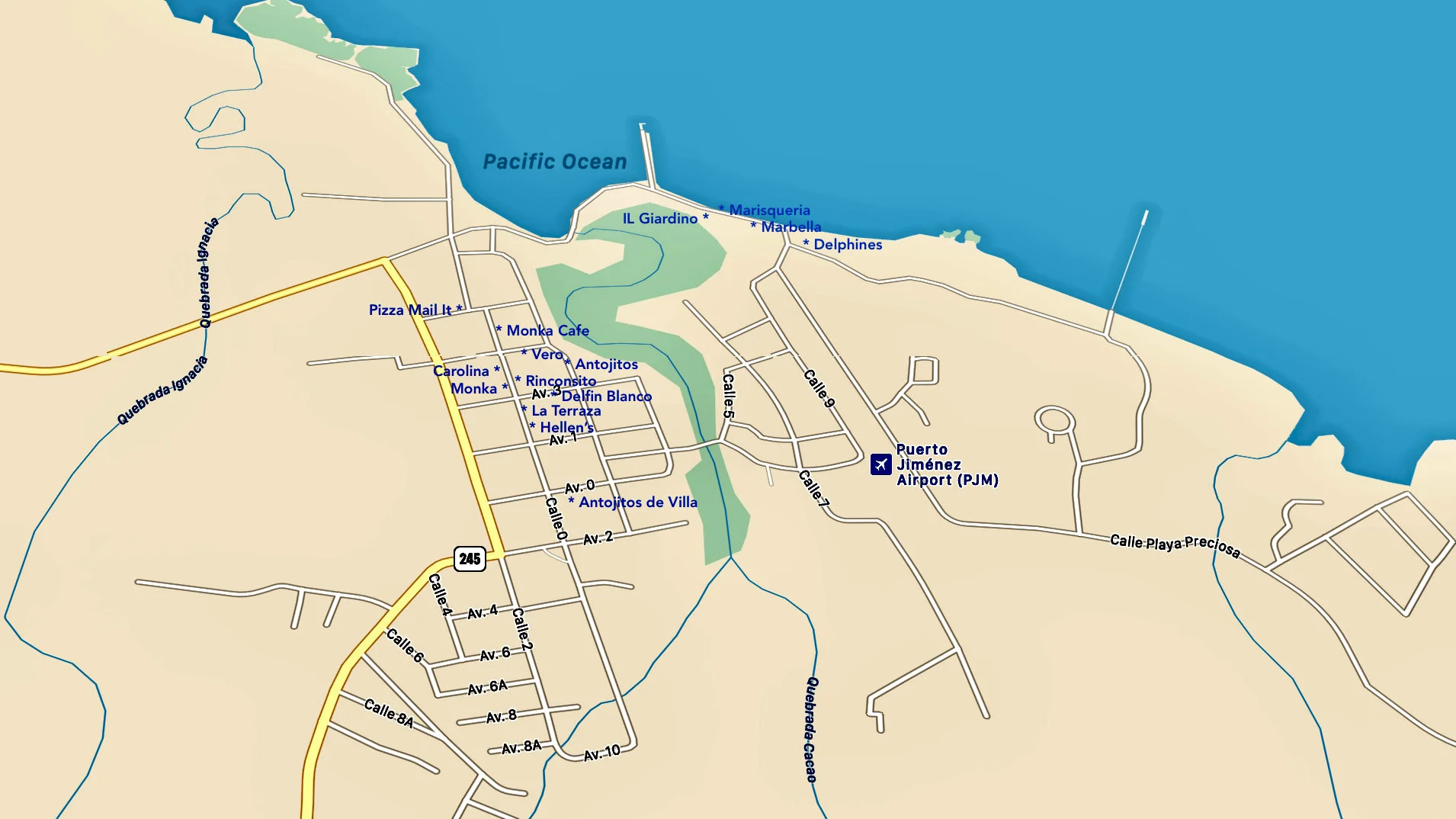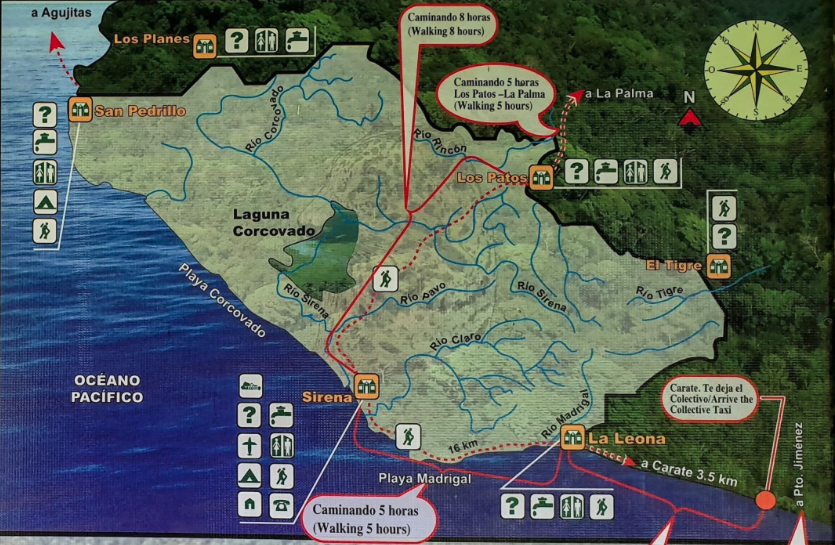MAPS OF THE OSA PENINSULA
The Osa Peninsula, located on the southwestern coast of Costa Rica, is a region of remarkable ecological diversity and natural beauty.
Accommodation and Services
Accommodation and Services: Maps of the Osa Peninsula also highlight the locations of accommodations, restaurants, and essential services like medical facilities and transportation hubs. These details are crucial for travelers seeking to explore the peninsula while ensuring their basic needs are met.
Navigation and Transport
Navigation and Transportation: Navigational maps, including road networks and waterways, assist visitors in planning their transportation routes. Given the rugged terrain and the need for boat transport in some areas, these maps are indispensable for travel logistics.
Topography and Geography
Topography and Geography: Osa Peninsula maps typically provide an overview of the region’s topography and geography. They show the rugged coastline, extensive mangrove forests, rivers, and the prominent Golfo Dulce to the east. These maps help visitors and researchers understand the physical layout of the peninsula, including its mountainous terrain and lowland rainforests.
Biodiversity Hotspot
Biodiversity Hotspot: Osa Peninsula is renowned as a biodiversity hotspot, home to an astonishing array of plant and animal species. Maps often highlight the various national parks and protected areas within the peninsula, such as Corcovado National Park and Piedras Blancas National Park. These maps serve as essential guides for ecotourism and conservation efforts.
Trail Maps
Trail Maps: For adventurers and nature enthusiasts, Osa Peninsula offers numerous hiking trails through lush rainforests and along pristine beaches. Trail maps are invaluable resources, indicating the locations of hiking paths, viewpoints, and notable attractions. They also include information about the level of difficulty, distance, and estimated hiking times.
Cultural and Historical Sites
Cultural and Historical Sites: Beyond its natural wonders, Osa Peninsula boasts a rich cultural history, with indigenous communities and archaeological sites. Maps may feature the locations of historical sites, indigenous villages, and cultural centers, offering insight into the region’s human history and cultural heritage.
Wildlife Observation
Wildlife Observation: Osa Peninsula is renowned for its abundant wildlife, including scarlet macaws, jaguars, tapirs, and countless species of birds and insects. Maps often include designated wildlife observation points or areas known for specific wildlife sightings. These help visitors plan their wildlife watching expeditions effectively.
Conservation Efforts
Conservation Efforts: As Osa Peninsula is a hub for conservation initiatives, maps often include information about ongoing projects, research stations, and conservation organizations operating in the region. This helps visitors connect with these efforts and potentially get involved in conservation activities.
Satellite Imagery and Technology
Satellite Imagery and Technology: With advances in technology, satellite imagery and GPS coordinates are increasingly incorporated into maps of the Osa Peninsula. These tools enhance precision in navigation and research, allowing for more accurate exploration and data collection.
In conclusion, maps of the peninsula serve as essential tools for tourists, scientists, conservationists, and adventurers alike. They provide a comprehensive overview of the region’s topography, biodiversity, cultural landmarks, and practical information for an enriching and responsible exploration of this ecologically vital corner of the world. Whether you’re planning a visit, conducting research, or contributing to conservation efforts, these maps are your gateway to the wonders of the Osa Peninsula.

Costa Rica Highlighing the Osa
From San Jose to Puerto Jimenez on the peninsula
45 minute flight / 7 hours drive / 9 hours by bus

San Jose to the Osa
by Coastal Road or by Mountain Road

Beaches of the Osa Peninsula
Beaches Golfo Dulce to Pacific Ocean

Some of the Accommodations

Corcovado Ranger Stations, Costa Rica National Park
Entrances to Corcoavdo National Park
La Leona / Los Patos

Puerto Jimenez, Osa

Corcoavdo National Park
Trails / Sirena / River System

Corcoavdo National Park Details
La Leona to Sirena – 5 hours
Los Patos to Sirena – 8 hours

Osa Peninsula History

The Peninsula Elevations
782 meter highest point





